I'm currently on holidays and my wife and mum just went shopping... so 'm taking the opportunity to update this blog.
Today I thought I would go back to an old photograph I've taken in Trafalgar Square to just discuss a bit on how to shoot fast and the get the shot you want.
Why would you want to shoot fast, some would ask? Wouldn't it be better to take your time and get it right? The answer would obviously be 'yes, but...' there is always a 'but'... you don't always have that time. If you are shooting an important person, in a crowded place where you might be obstructing the pathway etc... the time frame available for you to get the shot might be very short. So how can you get good shots in short time?
I'm sometimes asked to cover a Christmas or birthday party and was thinking I might share few tips to other photographers out there. These tips are valid for any kind of indoors party where the light level is low.
I will try to show you how to take good shots keeping the existing ambient light in the photographs and how to create your own ambient when the party venue is dull.
I will be covering mostly off-camera flash technique and how to maintain sharpness and ambient light.
Sorry for the long radio silence. After our holidays in Montpellier (France) that has started with a 4 days of nightmare trying to get into a plane: 3 flight cancellations, 12 tickets! I got sick with a very long and painful cough. But it seems to go away slowly now.
Back in September last year, I went to Paris for some training and to meet the Strobist@Paris meetup group. After the meetup, when all other photographers have gone home for dinner, I stayed around and waited for the sunset to see if there would be any photographic opportunity. I wasn't disappointed.
As I was wandering around I met a group of teenagers and proposed to take their pictures. They were over-excited and accepted the offer. They are a group of friends that live in the same town, dancing and doing music together. They are now a little association that regularly meetup in a room in their school and around Paris, especially here at "La Defence"
I've recently been contacted by several photographers, including Tony Kieu, my cousin in Australia, wanting to start taking photograph of models but just don't know where to start with. As most of us at the beginning, they started to take portraits asking their wife or a family members to pose for them, then, after a little (or big) while both parties can sometimes start to loose interest and the photographer just wants to get into something more challenging: photographing a model.
Taking pictures of a friend, of your wife or of a family member is something easy. It's a person you're going on well with so it's easier to be open and do some crazy things. Meeting and photographing a stranger is something else. For a lot of photographers it can be a really big challenge which can get worse with the time if they don't make the jump and try it.
Hopefully, with the help of the Internet, you can prepare and liaise with models online which makes it easier to arrange a meetup for a photo session.
David Hobby from Strobist.com has at last launched the 2nd season of the Boot Camp series.
For people who don't know what Strobist is, Strobist is a blog created by David Hobby in 2006. David Hobby was a photo-journalist at The Sun in Baltimore, USA. David was sharing his off-camera flash lighting techniques using small and portable flashguns instead of the heavy studio heads that photographers used to carry with them with the help of assistants. His teaching and photographic skills are such, he now have a worldwide community of fans. If you are interested to learn how to properly light your photographs, I strongly suggest you to go and read his Lighting 101 and Lighting 102.
"The Boot Camp is a series of assignments designed to help the newbs to get off their collective butt and actually go shoot something. If you are more experienced, you are more than welcome to participate. But understand that, at least at first, we'll be dialing the degree of difficulty back a little."
I recently discovered some pictures taken on the iPhone that was somehow quite impressive knowing the low quality delivered by the iPhone built-in camera. It is said that what's important is not the camera but the person using it. "Yeah but what if the camera delivers low quality files?" was I asking to myself. So I decided to give a go and try to get some decent shots with both my iPhone and MDA Vario IV.
This started last week during my Easter break to Devon. My wife and I decided to go to Torquay after seeing a TV program "Hotel Inspector". The sceneries shown in the program seemed very attractive and we wanted to have a try and hoped it was going to be a sunny trip as it usually is for all our Easter holidays. So we packed up for a 6 days trip to Devon with my D300 and her D70s and of course our mobile phones.
Luckily for us the weather was so lovely that week while it was raining cats and dogs in London. So Saturday and Sunday were spent at Slapton Sands a 3 miles long beach near from Darmouth. I was really lazy that day and most of the time was spent sleeping under the sun in the lovely breeze. From time to time I would try to get some pictures taken but with my mobile phones leaving the D300 in the backpack (until the Sunday before leaving the beach doing some jumping shots on the sand, but this will be for another post).
If you are among the photographers that use lighting and like to share their techniques, you will probably describe your lighting setups for a particular photograph. But writting a description of a lighting setups is better if illustrated by a lighting diagram: one diagram is worth thousand words! Actually a lighting diagram can even save you typing a long description.
But drawing (by hand or with softwares like Illustrator) is maybe not your cup of tea. So one solution is to use ready-to-use lighting diagrams methods
One of the method is to use a template file containing a set of icons representing photographics objects (camera, umbrella, strobes...) and build your diagram from there. It is usually a PSD file with each object in a single layer. You then just need to hide/unhide a layer, duplicate it, rotate/move it to create your diagram.
A second method, which is more practical and does not require any software installation, is to use an online lighting diagram creator/editor.
I've been living in London since June 2006. By September/October 2006, if memory serves, I've joined the Ealing & Hampshire House Photography Society (EHHPS) after Googling for some camera club in my area. The club exists for quite some years now and meets every Thursday evening at 8pm at the Ealing Town Hall. There are two competitions per month, one print and one digital and we usually socialise in a pub nearby after each meeting.
After a little while I've joined few other clubs and groups such as the LPMG and the London Strobist group.
Joining a camera club is very useful and fun. It allows you to show your work and see the ones from other photographers. This is great as you can discuss ones technique and learn from that. Competitions from photographic societies are interesting, having good or bad marks does not always mean that your picture is a wow or a crap, but it helps with understanding and improving your skills in some areas.
Ever woke up on a Sunday morning feeling bored and wondering what you can do? Then you want to go out and take some pictures but drawing the curtains just reveals a dull and depressive cloudy day. Well I can tell you this happens to me quite regularly here in London... But what can you do? I can say bye to everything here and go back to Montpellier in the south of France or back to my parents there in New Caledonia that wonderful tropical island. But I can also accept Frank's invitation to go by the coast and instead of staying at home vegging out in front of the telly...








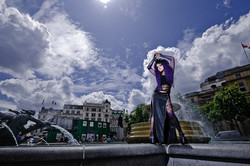
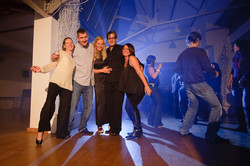
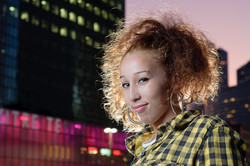
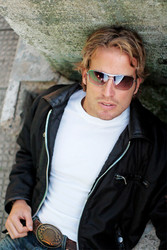
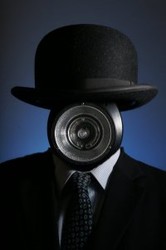

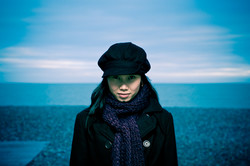
Add comment